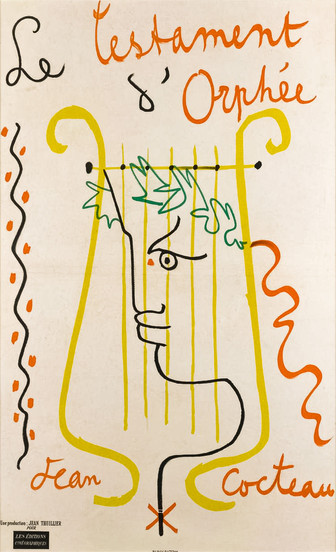"The Testament of Orpheus", Dir: Jean Cocteau, 1960
- Ravi Swami
- Mar 7, 2021
- 4 min read
Typically, I'm choosing to watch films that feature in a series, in this case a trilogy, out of their intended sequence, but you could argue that certainly, as far as Jean Cocteau was concerned, the impact is not diminished in any way due in large part to their disjointed dreamlike narratives.
The last of Cocteau's "Orphic Trilogy" and following on from "Orpheus" which was preceded by two decades with "The Blood of a Poet" (1932) the linking themes are the journey of the artist using mythology as a loose basis.
Cocteau's films are often dismissed as being overly self-indulgent and hard to decipher - one thing they definitely are is experimental in a way that no Hollywood film of the period in which he made the Orphic Trilogy could be - the only exception I can think of is "A Matter of Life & Death" by Michael Powell & Emeric Pressburger, not really a Hollywood film as such, which sits roughly between "The Blood of a Poet" & "Orpheus" chronologically, and in a manner similar to the opening of that film, likewise, Cocteau isn't afraid to grapple with complex and grand themes like time travel, space and the intersection of reality and the imagination, and he uses film techniques like reversed action and multiple exposure to astonishing effect in several scenes in the film.
The film opens with sequence that could have come from an episode of "Dr Who", leading me to wonder if the TV series was inspired in any way by Cocteau's work - a dandy (Jean Cocteau himself) in 17th Century dress materializes in an empty film studio and appears before a young boy (Jean-Pierre Léaud in an early role) sitting at a school desk and dreaming of a career as a famous scientist, and to the boy the shock of seeing this apparition causes it to vanish.
Moments later, in the same film studio the apparition reappears but this time in front of an aging man in a wheelchair with his nurse and the shock causes the old man to die on the spot, in the process dropping a small plastic container full of bullets which the dandy picks up and pockets since he declares that he has been searching for it across time and space.
The dandy vanishes and reappears to see a middle-aged scientist who is on the verge of collapse due to overwork and presents him with the bullets. When he explains to the scientist that he is not a ghost as such but a traveller in time and space, the scientist grows curious and asks him how he does this but the dandy only gives a vague answer.
The dandy challenges the scientist to shoot him with one of the bullets, which he does and the dandy promptly collapses and dies.
This bizarre and yet fascinating preface, full of clever cinematic tricks such as a footprint left behind by the time traveller in one time period after he disappears, is followed by the "real" Jean Cocteau, now in contemporary dress, exiting the studio and entering locations from "Orpheus", in particular a marble quarry used in sequences set in the Underworld of that film.
From this point onwards the film is composed of a random dreamlike narrative where characters from "Orpheus" reappear as if trapped in some zone where time no longer exists - a metaphor for cinema itself perhaps - so we see Jean Marias as the poet and Maria Casares and others with the addition of Pablo Picasso and Yul Brynner.
I have to admit that by the half-way point I had started to doze off, not because the film was boring or indecipherable but more out of tiredness and bizarrely, dreamt (in B/W, like the film) that I met Jean Cocteau in a location like something from the film, - a film studio or abandoned factory with vast cavernous spaces where we shook hands and he gave me a warm, very French, hug and then I left - he was with someone in a wheelchair.
In the dream I tried to take a photo of the location with my phone but the image was blurry so I gave up and then went to find my hat and coat to leave but everything had changed.
Then I woke up and the film had finished but the dream continued after I went to bed.
If that sounds like an endorsement of the dreamlike quality of Cocteau's films then it is, and this is served by the imaginative lighting design, art direction and choice of locations, such that the films have the ability to become lodged in your subconscious and get under your skin - Cocteau uses creepy visual devices like open eyes painted on closed eyelids and as stated in the previous post on "Orpheus" his films became a touchstone for pop videos in the 1980's, constantly referenced for their imagery and free associative qualities.
"The Testament of Orpheus" is a definitely a film that is worth several viewings simply because it's more clever than you may think on a first viewing, providing you can get past the sense that this is a very self-indulgent intellectual exercise of the part of Jean Cocteau.
One thing the Orphic Trilogy is, is influential, even if it represents the very unique vision of Jean Cocteau.







Comments